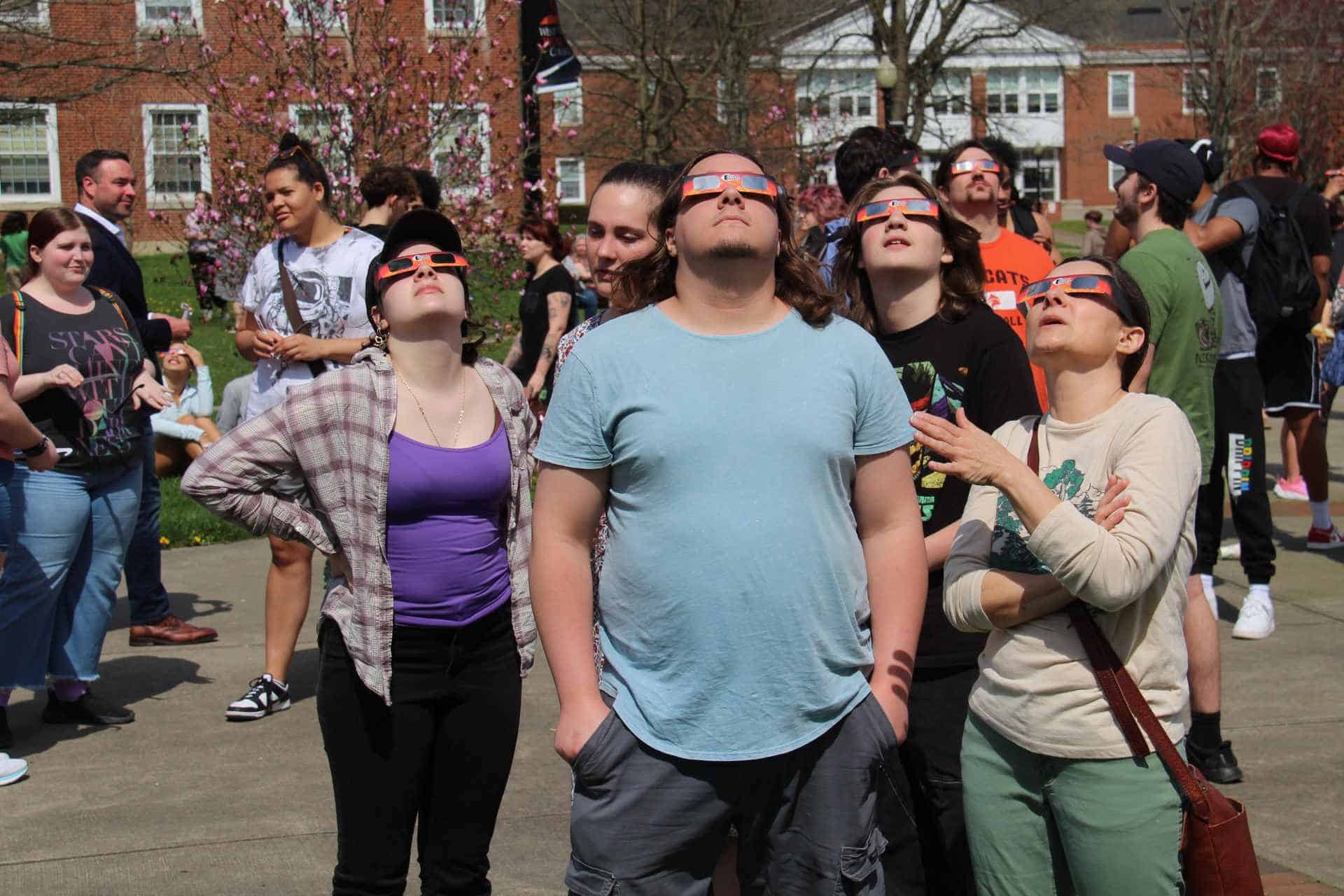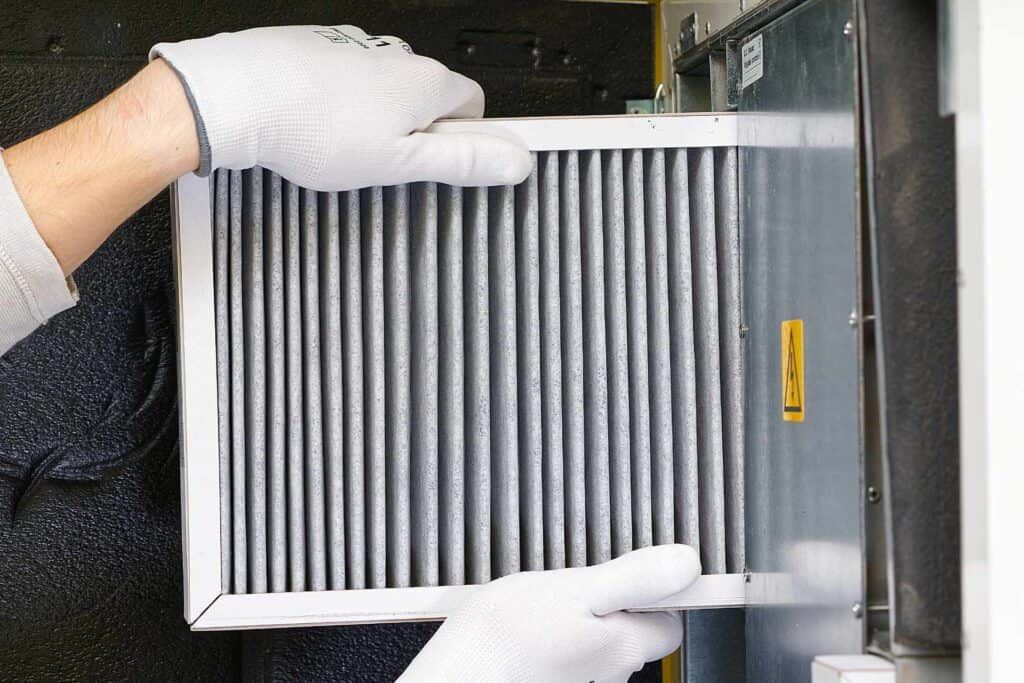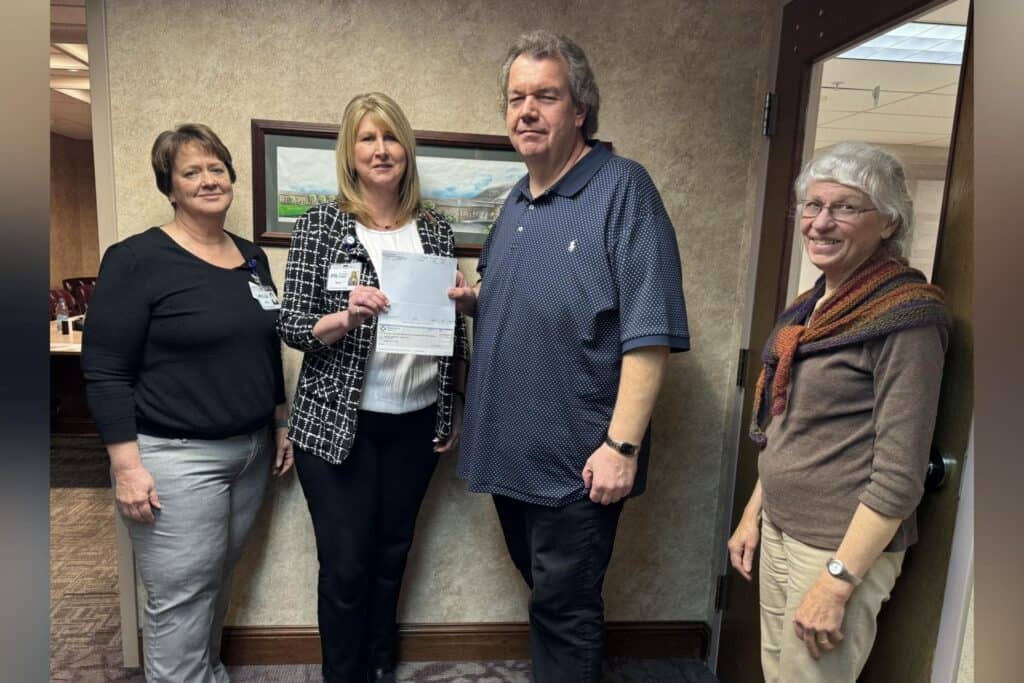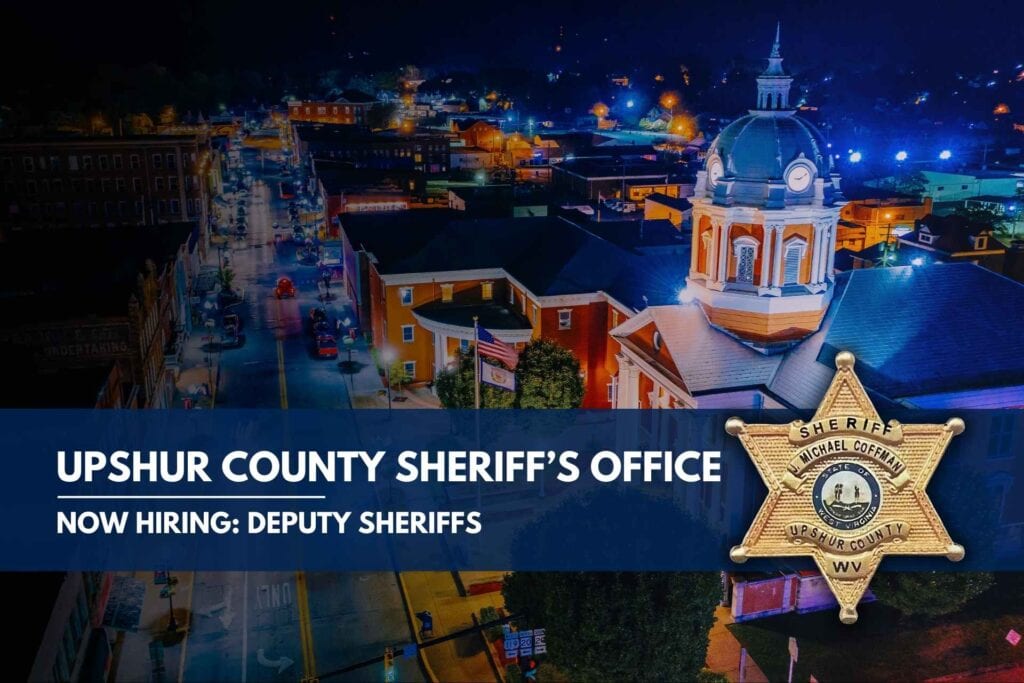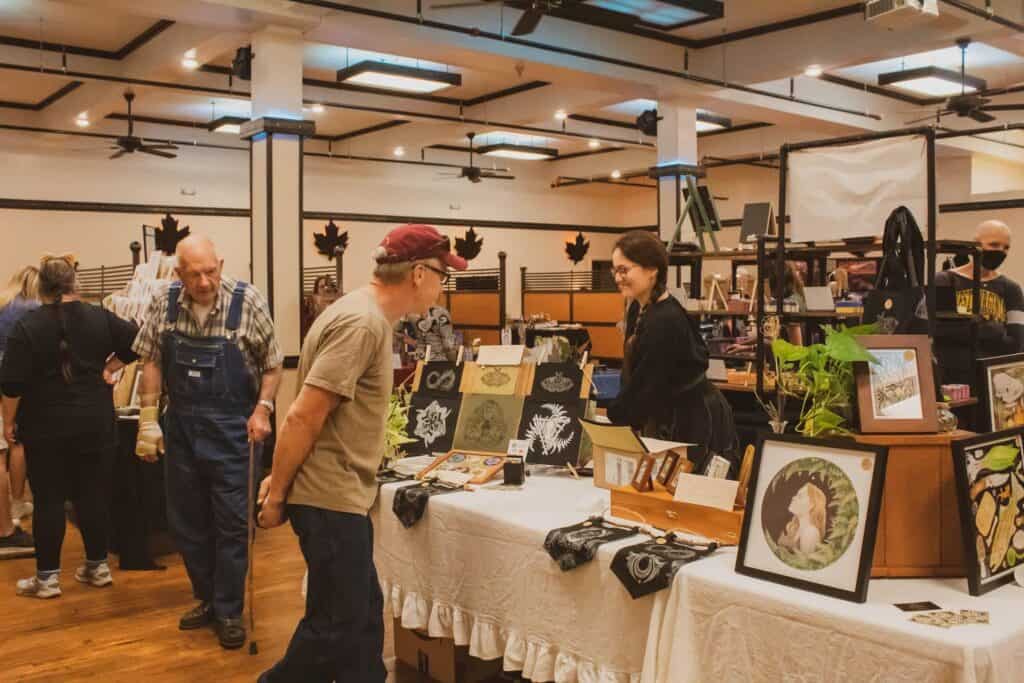BUCKHANNON – West Virginians were given a front-row seat to an almost complete solar eclipse and will likely not see another one for about another 20 years.
West Virginia Wesleyan College handed out solar eclipse glasses and set up telescopes in anticipation of the solar eclipse on Monday, April 8. At the start of the event, Dr. Tracey DeLaney, associate professor of physics, the college’s Space Club advisor and Planetarium director, was in front of Wesley Chapel, obtaining the perfect view of the eclipse on her own telescope and informing curious gazers about the phenomenon.
A total solar eclipse occurs when the moon passes between the sun and Earth, completely—or almost completely—blocking the sun’s face, according to NASA.
“This is a solar eclipse, where the moon is passing in front of the sun, and we happen to be in a really fortunate circumstance where the sun is about 400 times bigger than the moon is, but it’s also 400 times farther away, so that perspective means that in the sky, they’re about the same size to us, which is about half a degree,” DeLaney said. “That’s about the size of your thumbnail, so that means if we get a chance alignment, one will block the other.”
DeLaney said the eclipse would reach peak blockage at 3:15 p.m., but it would only be about 90 percent blocked.
“While solar eclipses are pretty common — they happen every year or two years – it’s just they happen in a lot of places and not necessarily in the same place twice,” she said. “We’re fortunate that in 2017 we had a nice solar eclipse for the United States and here we are, not that much later, with another one across the United States, but now, it’ll be 20 years before another one crosses the United States.”

DeLaney said the 2024 eclipse would also last slightly longer than the 2017 eclipse.
“The one today is a little bit special,” DeLaney said. “So, the moon’s orbit around the Earth isn’t exactly a perfect circle; it’s also not a really highly elongated ellipse, it’s only slightly elliptical — just a teeny bit different from a circle.”
“This matters because there are times when the moon is slightly closer to the Earth and times when it’s slightly farther away, and it is slightly closer to Earth during this eclipse, which means the eclipse will last slightly longer. The totality was a little over two minutes in 2017, but it’s about four minutes this year.”
WVWC environmental studies major Xavier Scott said he was excited to set up his own telescope to enjoy the eclipse.
“I talked to Dr. Delaney, and I’m an astronomy hobbyist, so I asked her if she’d liked me to bring the telescope, and she said yes,” Scott said. “I don’t use it as much as I’d like to, and it’s a once-in-a-lifetime event, so it’s great to be given an opportunity to see something that I probably won’t see again for quite a long time. There is another eclipse close to us in the 2040s, but I’m an astronomy buff –I love the celestial bodies and the whole idea of space and how light works and the universe.”

President of WVWC, Dr. James Moore, said he was happy to see a sizable crowd gathering at Wesley Chapel to enjoy the viewing event.
“It’s a lot like the last eclipse in 2017 — the whole campus comes out to experience it, the community comes out – so it’s a great reminder the college is here to be a place of learning and central gathering,” Moore said. “What I like about it is that I’m seeing all these students out here hanging out with each other, and the reason they’re outside today is because there’s a neat astronomical event and learning happening in real-time. There’s learning going on, and we’re all having a great time and laughing, but there’s learning going on.”


